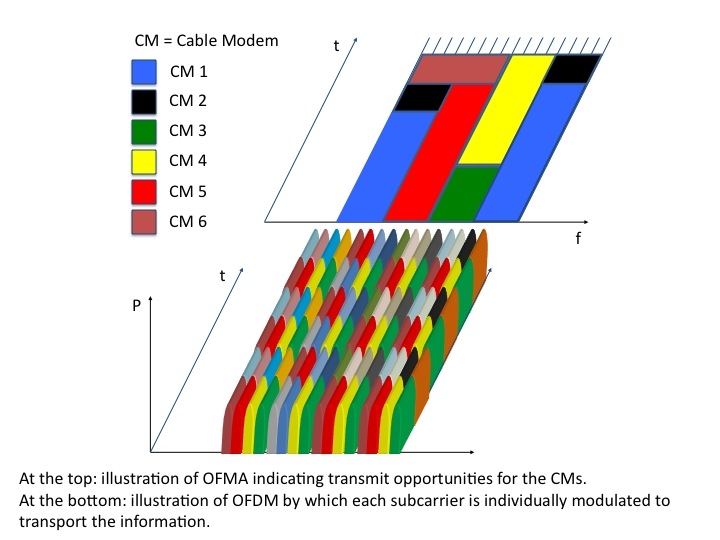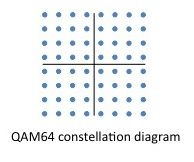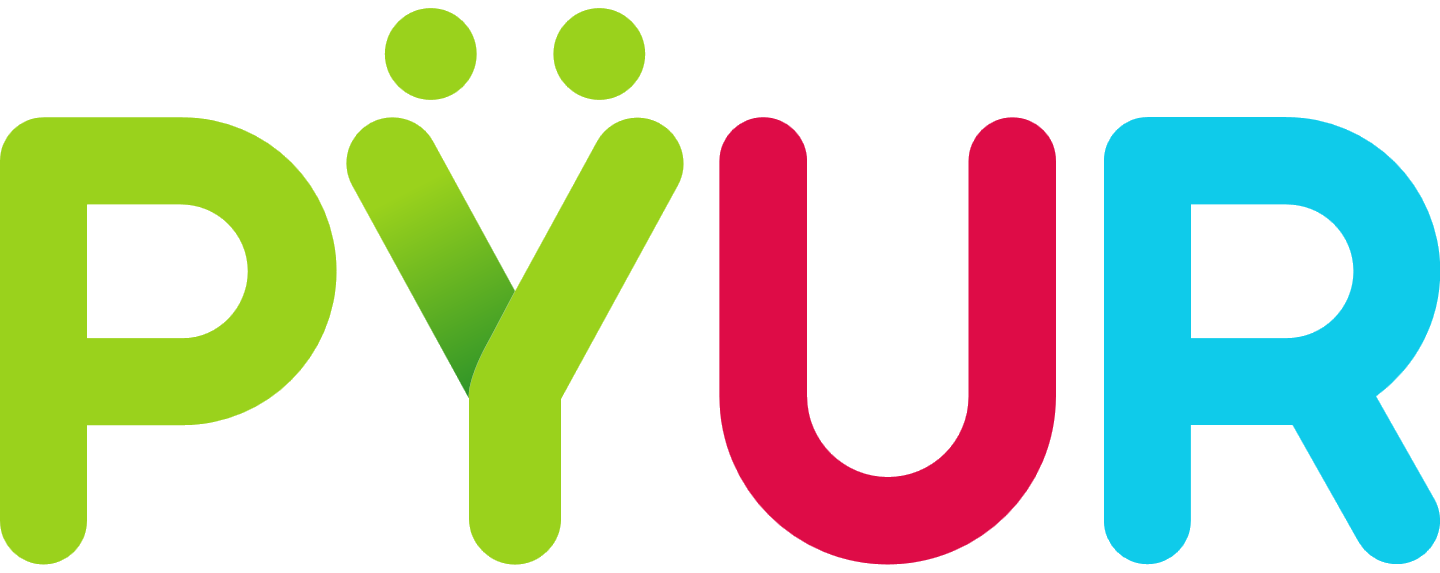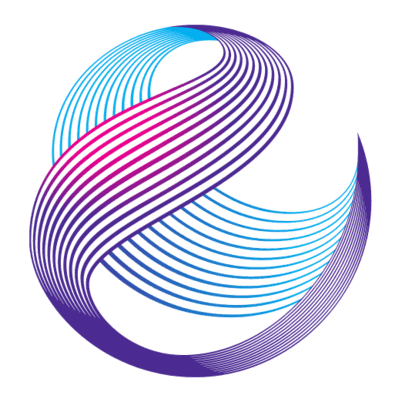OFDM(A) in DOCSIS 3.1: multiplexing, modulation and multiple access?

Like the mobile 4G standard LTE or the terrestrial digital video broadcasting standard DVB-T, the new cable modem standard DOCSIS 3.1 now uses Orthogonal Frequency Division techniques for signal transport. The channel consists of orthogonal subcarriers that will carry the information over the link. More on orthogonal subcarriers in our course on DOCSIS 3.1.
But if we talk about OFDM, the M stands for Multiplexing. In OFDMA, the MA is Multiple Access. And what about Modulation? That’s why sometimes confusion exists.
Modulation enables the subcarriers to transport data by changing the amplitude, phase or the frequency or a combination of these. In DOCSIS 3.1, like in the previous versions of DOCSIS, only the phase and amplitude are changed: QAM (Quadrature Amplitude Modulation).
For example in QAM64, there are in total 64 unique combinations of phase and amplitude at a certain time, which allows to carry 6 bits of information.

Multiplexing has nothing to do with modulation. If we have multiple sources of (internet) data that must be delivered by one device (in the case of DOCSIS the Cable Modem Termination System or CMTS) to multiple receivers (cable modems (CM)) in a physically connected node, the data needs to multiplexed, either in time or over the modulated subcarriers or in (time, subcarrier) blocks.
Multiple Access techniques are used when multiple sources are sending their data on one link or channel. In DOCSIS 3.1, the CMTS will instruct a CM in the node to send its data in the channel to the CMTS during a time period over a subset of the modulated subcarriers, again a (time, subcarrier) block. This (time, subcarrier) block is only allocated to that one CM to avoid collisions. Multiple access is only applicable in the upstream and is organised by the DOCSIS MAC protocol.


























learning